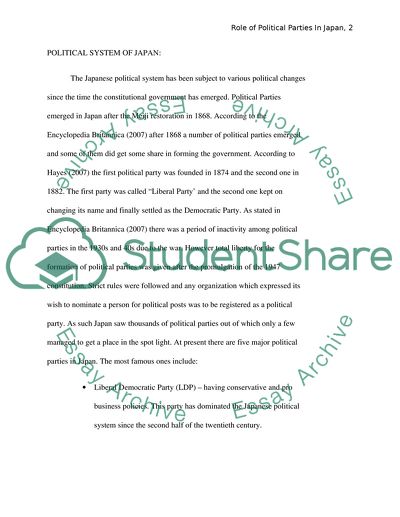Cite this document
(“Role of Political Parties in Japan Essay Example | Topics and Well Written Essays - 3000 words”, n.d.)
Retrieved de https://studentshare.org/politics/1543317-role-of-political-parties-in-japan
Retrieved de https://studentshare.org/politics/1543317-role-of-political-parties-in-japan
(Role of Political Parties in Japan Essay Example | Topics and Well Written Essays - 3000 Words)
https://studentshare.org/politics/1543317-role-of-political-parties-in-japan.
https://studentshare.org/politics/1543317-role-of-political-parties-in-japan.
“Role of Political Parties in Japan Essay Example | Topics and Well Written Essays - 3000 Words”, n.d. https://studentshare.org/politics/1543317-role-of-political-parties-in-japan.


